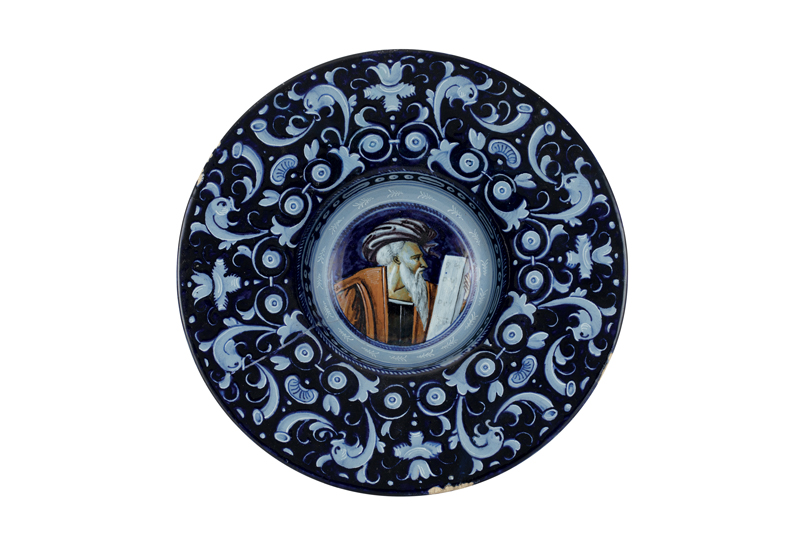The majolica collection by Umberto Gori 14 December 2021
Next 14th December, in the Milanese halls of Palazzo Recalcati, Wannenes will display an important collection of majolicas, mostly plates and apothecary sets, gathered since the 1980s by Umberto Gori. The passion for collecting arose in Umberto Gori, despite his luminous career as an academic and consultant to institutions, when he met the well-known scholar Gian Carlo Bojani, director of the Museo Internazionale delle Ceramiche di Faenza: a meeting that was destined to turn into a solid friendship. The collector’s great interest in majolica was to be supported and stimulated by his wife Adelaide and by what was to become a continuous association with scholars and researchers of ceramics both in Italy and abroad. This frequentation was also made livelier by their taste for hospitality. Gori’s home in fact soon became a centre for discussion and comparison on Italian maiolica. The catalogue to be published in December presents more than 200 lots, covering a period from the fourteenth to the nineteenth century: a collection of great interest not only from a collectors’ point of view but also from a historical-artistic one, considering that among the majolicas illustrated, alongside typical and characteristic examples of the best production of the various ceramic centres, there are others purchased by the collector for their documentary interest. In some cases, these ceramics are a real challenge to the connosseurship and the research of specialists. As is characteristic of collections of this quality, the core of the historiated work is important, we could say central: it ranges from works from Venice, Urbino and Pesaro (with Lanfranco delle Gabicce, see the dish with “Jesus forgiving the adulteress”), Deruta (perhaps Giacomo Mancini, the Friar, with a dish with St. Jerome), to Casteldurante, Rimini and Rome. Deruta is well represented not only with plates of various sizes but also with shaped pieces, mostly lustre ceramics. The nucleus of heraldic majolica is beautiful and numerous, often compendiary, various risers and dishes. Ligurian production is also present and features a riser from the Guidobono kilns in Savona, datable to 1690 and probably made for the wedding between Pier Antonio Filippo Franceschi and Maria Maddalena Alamanni in 1688. In compiling this collection, a certain amount of attention was also paid to Castelli (and more generally to southern production), which is also present with examples from the 18th century. The connoisseur has also made an interesting choice regarding a characteristic plastic type, the saltshakers, represented here not only in the Urbino production, but also in those of Southern Italy, a field that still lends itself to interesting discoveries. And finally, the pages of the catalogue will also include sculptures, and large ones at that, such as the figure of the Madonna coming from the sixteenth-century Patanazzi kilns in Urbino.

